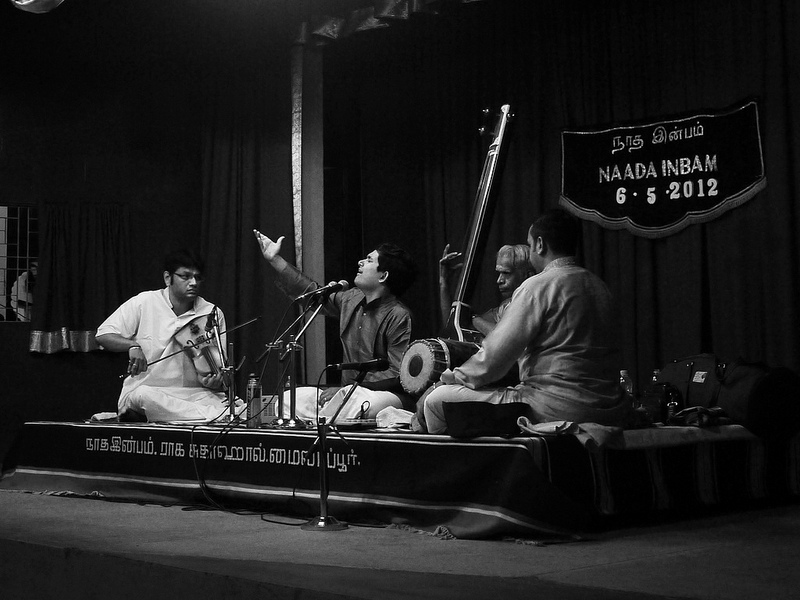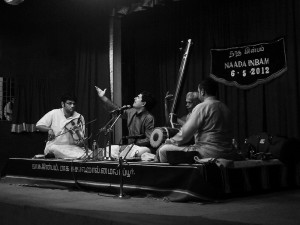by Deepa Venkatraghvan with creative inputs from Priya Gopal
[box]The learning environment for classical music and dance has traditionally been rigid and conditional, forcing students to feel a lot of pressure rather than joy when they enroll for such classes. Deepa Venkatraghvan discusses her perspective on this tradition and tries to figure out where it’s all going wrong, taking instances from her own life. Creative inputs from Priya Gopal.[/box]My day begins with the melodious Venkataswara Suprabhatam rendered by the magical M.S. Subbulakshmi. It ends with the lovely Hindi film music of the 70s or the 80s. I listen to music while driving, while cooking, while cleaning and even sing while bathing. But I’d be exaggerating if I said I love music.
I like music. I like listening to songs, I like to shake a leg or two at parties and my Sunday mornings are best spent listening to Hindi film songs. Although they do not feature high up on my priority list, I would be happy to learn dance and maybe sing in a troupe, because I enjoy music. But my feelings towards music weren’t similar when I was a child. Let me explain.
Having grown up in a Tambrahm household, music has always been a part of my life. My mom is a trained classical singer. All my older cousins learnt some form of classical music or the other; the girls typically learnt to sing, to play the violin or to do the Bharatnatyam and the boys learnt to play the mridangam. Summer vacations with cousins were not complete without a daily session of ‘practice’. Family get-togethers and festivals were not complete without the mothers and grandmothers egging their daughters to sing.
I would be lying if I said I enjoyed all this. Music came into my life, conditional and purposeless. As a child of around six or seven years, I too was inducted into this system of learning classical music and dance. Music lessons were treated on par with academics and hence came with the same kind of pressure and stress. The classical music teachers were strict. Students were expected to learn the ‘Geethams’ and ‘Varanams’ by heart. The Bharatnatyam lessons were also rigid. We had to practice the squat, the mudras, and facial expressions and do innumerable repetitions, surprisingly, without a hint of music. All we heard was a beat our teacher sounded out by hitting a wooden stick on a wooden plank. Only after you perfected these basics did you move on to learning dance with music. Yes, practice probably made one perfect, but for me, it destroyed the magic in music and dance.
Even if one was trained in classical music formally for many years, he or she was allowed to perform only at family functions or temple festivals. Making a career of music was not an option. Public performances were a strict ‘no-no.’ Having trained in classical music, your voice obviously grew stronger. But to sing ‘light music’ at school or college festivals was not favoured much. So the much-needed drive for any pursuit – a purpose, one that we could define ourselves for our art – was taken away. I have many friends and cousins who spent many hours a day practising singing or playing the violin and today, the songbooks and violin cases lie under layers of dust. The hours of practice would have indeed been worth it if they had translated to something more in the long term. But for them it never did. There were professional classical singers during that time, but my guess is that they may have been a minority. Not many middle class families were open to the idea.
Knowing a classical art form was an indicator of your value system and your upbringing as well. So these sessions were also like a contest between mothers to see who among their children was brought up the best. Even if you sang like a pig, you had to sing to prove you were a cultured one. Girls were and are still probably asked to display their singing or instrumental talent when ‘boys’ come to see them during marriage proposals.
At this point, I must say that this perception of music being a measure of your upbringing was the general case in a Tambrahm environment and not so much in our house. My parents, though keen that my sister and I should learn music, did not oppose when both of us opted out of classical music and Bharatnatyam classes after a few years of experimenting. I went on to join the school choir while my sister chose to learn the piano. The piano was a compromise because her first choice was the guitar. Our parents had reservations about the guitar as visions of their daughter turning into Zeenat Amaan from “Hare Rama Hare Krishna” flashed before their eyes. The piano was still ok and ‘respectable,’ according to them. As for me, the school choir was something lighter, with friends and fun, and most importantly, a decision of my choice with no pressure. But it did serve the same purpose – taught me how to sing. And my sister’s piano classes too didn’t come with the pressure that so defined classical music training. Much later, when we were mature enough to understand the importance of classical music, we both, out of interest, started taking classical music lessons.
Now, I am a mother and my daughter just turned five. Like all mothers, I am keen that she explores her talents and pursues some art or sport that she will grow to love. So I enrolled her for a classical singing class and decided that I would only introduce her to it and it was completely up to her to decide if she wanted to continue. But after the first few classes, she refused to continue and I stopped sending her to the class. And this was her explanation, “Indian music is very slow and very boring. I do not like it. I like to sing the songs they teach me in school because they are fun.”
Since music was out, I went to the next on the list: I decided to enroll her in dance classes. I picked a ‘Bollywood dance class’ as against a traditional Bharatnatyam class. It’s been three months now and she loves her class and her teacher. And what makes it interesting for her is that the class is lot of fun. Of course, a Bollywood song itself is peppy and fun. But the teacher makes it all the more enjoyable. It was then that I realised how important method was to any lesson. The fun and magic in dance as well as music was what my teachers never handed down to me. They had lost me as a student because of the rigidity of technique. My daughter may have enjoyed a classical music class if it had been as much fun.
Traditional mindsets about the art forms are very strong. Even today many still believe that music and dance are not career options. Why is our art form, the embodiment of the goddess of learning, so conditional? If music is the language of the heart, why does classical music tie us down? Why does it not allow kids to explore themselves? Why do we look outside schools to get our kids to learn it? If classical music and dance are such strict disciplines, why don’t we trust enough to value it? Why, if music including classical music is the expression of human emotions, doesn’t it teach us to express? Why is it so conditional?
The answer probably lies in the methods of teaching these art forms. In trying to keep tradition alive, the strict and rigid methodology is suffocating classical music. The education space vis-a-vis school learning environments is changing. New teaching methods are permeating the classroom and making learning fun. Only if music is unchained from the shackles of rigidity will it be able to lure the future towards it.
Can we unchain the melodies?
Deepa Venkatraghvan, a chartered accountant, loves to write. She works in the media and when she is not writing about smart investing, she pens her thoughts about life’s experiences. You can check out her personal finance blog at http://blogs.ec







